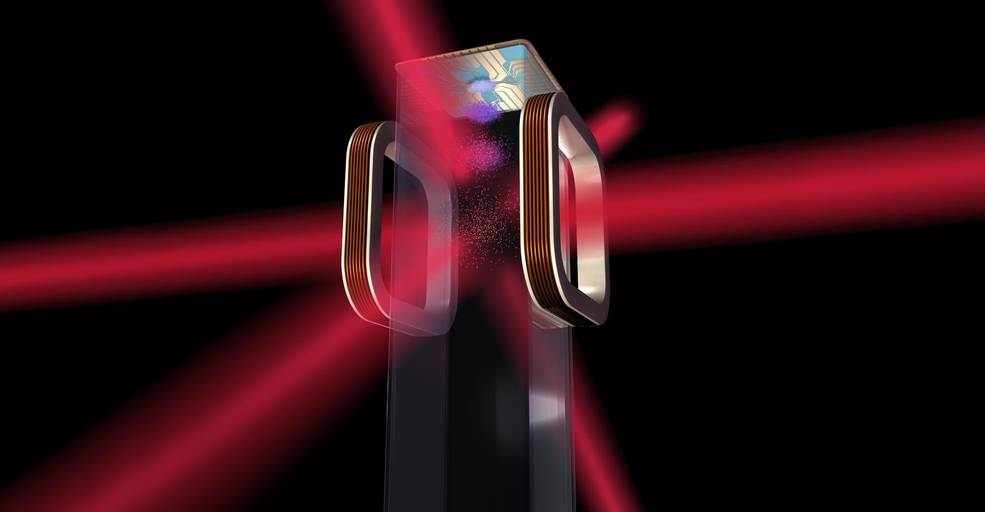Sometimes, NASA are just the ultimate hipsters: they want to make the coolest spot ever and it’s going to be “totally out there” — on the International Space Station.
We’ve been cool before, but never in outer space

Credits: NASA
The quest for achieving ever-colder temperatures has been a significant theme for physicists in the past decades. The quest has proven fruitful, yielding breakthroughs in superfluidity and superconductivity, as well as in quantum physics. Now, NASA wants to take this one step further, and bring a Cold Atom Laboratory (CAL) into outer space.
“Studying these hyper-cold atoms could reshape our understanding of matter and the fundamental nature of gravity,” said CAL Project Scientist Robert Thompson of JPL. “The experiments we’ll do with the Cold Atom Lab will give us insight into gravity and dark energy — some of the most pervasive forces in the universe.”
Basically, astronomers will take an ice chest-sized box and bring it aboard the International Space Station. There, they will cool matter to an extremely low temperature, almost reaching the absolute 0, the minimum temperature at which anything can exist in the universe. More specifically, they will lower matter to a billionth of a degree above the Absolute 0, more than 100 million times colder than the depths of space. At this temperature, matter creates what is called a Bose-Einstein condensate. In this form of matter, familiar physics fades away, and quantum phenomena start to take over, even at a macroscopic scale. Matter almost stop behaving as particles and starts behaving more like waves. In other words, you could observe “waves of atoms”, moving synchronized with each other just like water drops in an ocean wave.

This is where this approach kicks in: bose-Einstein condensates have been created on Earth before several times, but due to Earth’s gravitational pull, they always fall down and therefore physicists only have fractions of a second to observe them. In space, the matter will be in “free fall” which will allow NASA to observe it for up to 10 seconds at a time. With further technological advance, that time is expected to be extended up to two minutes.
To coldly go where no one has gone before
This experiment could also help us broaden our horizon, in an astrophysical kind of way. As Kamal Oudrhiri of JPL, the CAL deputy project manager explains, the universe is roughly 27 percent dark matter, 68 percent dark energy and about 5 percent ordinary matter. We’ve seen quite a bit of the 5% matter… but that’s still just 5%.
“This means that even with all of our current technologies, we are still blind to 95 percent of the universe,” Oudrhiri said. “Like a new lens in Galileo’s first telescope, the ultra-sensitive cold atoms in the Cold Atom Lab have the potential to unlock many mysteries beyond the frontiers of known physics.”
But it’s not all theoretical science. The results of these experiments could send big ripples through the scientific world, and help us better understand strange mishaps at the cutting edge of technology — which is usually what happens when quantum mechanics starts to kick in. Among others, bose-Einstein condensates could help us develop better sensors, quantum computers and atomic clocks used in spacecraft navigation.
Another interesting facet of the extremely cold matter is that it’s a “superfluid” — a fluid with no viscosity. As explained above, atoms move in sync with each other and there’s basically no friction inside the fluid. Instead, it all moves in unison as if it were a solid.
“If you had superfluid water and spun it around in a glass, it would spin forever,” said Anita Sengupta of JPL, Cold Atom Lab project manager. “There’s no viscosity to slow it down and dissipate the kinetic energy. If we can better understand the physics of superfluids, we can possibly learn to use those for more efficient transfer of energy.”
The mission is currently in its last batch of tests. If everything goes according to plan, then we’ll pretty soon be hearing about ultra-cold matter on the ISS.
“The tests we do over the next months on the ground are critical to ensure we can operate and tune it remotely while it’s in space, and ultimately learn from this rich atomic physics system for years to come,” said Dave Aveline, the test-bed lead at JPL.


